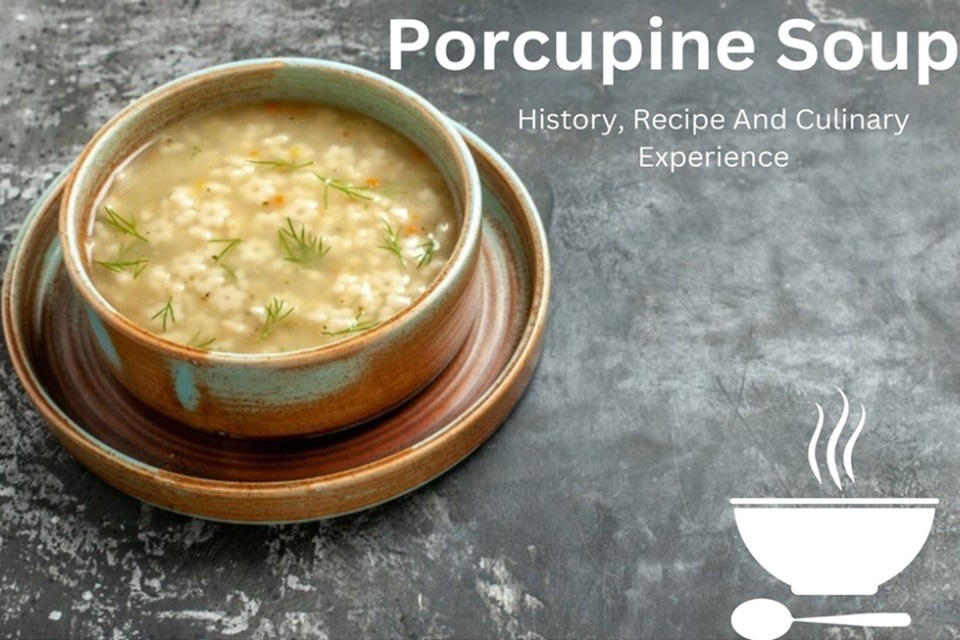
Exploring Porcupine Soup: History, Recipe, & Culinary Experience
- Food
- 23 April 2024
Porcupine soup is a fascinating dish that captures curiosity and delights the taste buds with its unique charm. In the world of culinary exploration, few dishes match its exotic appeal. With its origins deeply embedded in various cultures worldwide, it provides a window into the diverse tapestry of culinary traditions and human creativity. In this article, we will explore the history, preparation, cultural significance, and culinary experience of Porcupine soup.
Introduction To Porcupine Soup
It is a dish made from Porcupine meat. Its origins date back centuries to indigenous communities where Porcupines were valued for their protein. Revered for their symbolic importance, Porcupines played a significant role in cultural traditions. Hunting and cooking Porcupine meat, often in soup form, demonstrated a deep respect for nature’s gifts. Over time, Porcupine soup evolved into a special delicacy enjoyed during important gatherings, featuring diverse regional flavors and cooking methods. Today, it serves as a cherished reminder of varied culinary traditions. Though not widely available, it represents the richness of global cuisines and the enduring nature of traditional practices in modern times.
Porcupine Soup Recipe & Cooking Instructions
Ingredients:
- 1 Porcupine, cleaned and skinned (about 3-4 pounds)
- 8 cups water or broth
- 2 onions, chopped
- 3 carrots, diced
- 3 potatoes, peeled and cubed
- 2 cloves garlic, minced
- Salt and pepper to taste
- Optional: herbs like thyme or bay leaves for seasoning
Instructions:
Prepare The Porcupine:
- Ensure the Porcupine is thoroughly cleaned and skinned, removing any quills or debris.
- Cut the Porcupine meat into manageable pieces, removing excess fat if desired.
Marinate (Optional)
- Marinate the Porcupine meat in a mixture of salt, pepper, and your choice of herbs for enhanced flavor. Allow it to marinate for at least 1 hour, or overnight in the refrigerator for best results.
Prepare The Soup Base:
- In a pot, heat the oil over medium heat. Add the chopped onions and minced garlic and cook until they become tender and emit a fragrant aroma.
- Add the diced carrots and cubed potatoes to the pot, stirring to combine with the onions and garlic.
Cook The Porcupine:
- Once the vegetables are slightly tender, add the marinated Porcupine meat to the pot.
- Pour in the water or broth, ensuring that the meat and vegetables are fully submerged.
Simmer:
- Bring the soup to a boil, then reduce the heat to low. Cover the pot and let the soup simmer for 2-3 hours or until the Porcupine meat is tender and cooked.
- Stir occasionally and skim off any foam that rises to the surface.
Season & Serve:
- Once the Porcupine meat is cooked, season the soup with salt and pepper to taste.
- Serve hot, garnished with fresh herbs if desired.
Reasons To Consider Porcupine Soup
Nutritional Aspect
The nutritional aspect of Porcupine soup is notable for its balance of protein, vitamins, and minerals. Porcupine meat is lean and rich in protein, essential for muscle growth and repair. Additionally, it provides important nutrients such as iron, zinc, and B vitamins, supporting overall health and vitality. Combined with vegetables and herbs in the soup, it offers a wholesome and nourishing meal that satisfies both the palate and the body.
Culinary Experience
The culinary experience of Porcupine soup is a journey through unique flavors and cultural heritage. Each spoonful offers a taste of tradition, meticulously crafted from Porcupine meat and infused with aromatic herbs and spices. It’s not just a meal; it’s a connection to centuries-old culinary practices, inviting diners to savor the richness of global cuisines.
Final Words
In conclusion, Porcupine soup presents a unique opportunity to explore culinary traditions and savor the richness of global cuisines. With its fascinating history, flavorful ingredients, and cultural significance, it offers an unforgettable dining experience. Whether you’re intrigued by its exotic charm or seeking to broaden your culinary horizons, trying Porcupine soup will surely be a memorable adventure. So, why not embark on this culinary journey and discover the delights of Porcupine soup for yourself? The decision to try this dish rests with you.
FAQs
Is Porcupine soup commonly found in restaurants?
It is not typically featured on restaurant menus, as it is considered a specialty dish and may not be readily available in mainstream dining establishments.
How would you describe the taste of Porcupine meat?
Porcupine meat is often likened to pork or rabbit, with a slightly gamey flavor profile. It can be tender and flavorful when cooked properly, absorbing the herbs and spices used in the soup.
Are there substitutes for Porcupine meat if it’s not available?
In the absence of Porcupine meat, some individuals use alternatives like rabbit, pork, or chicken to mimic the texture and taste of Porcupine soup. However, these substitutions may result in a slightly different flavor.



